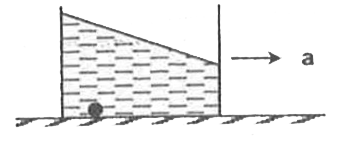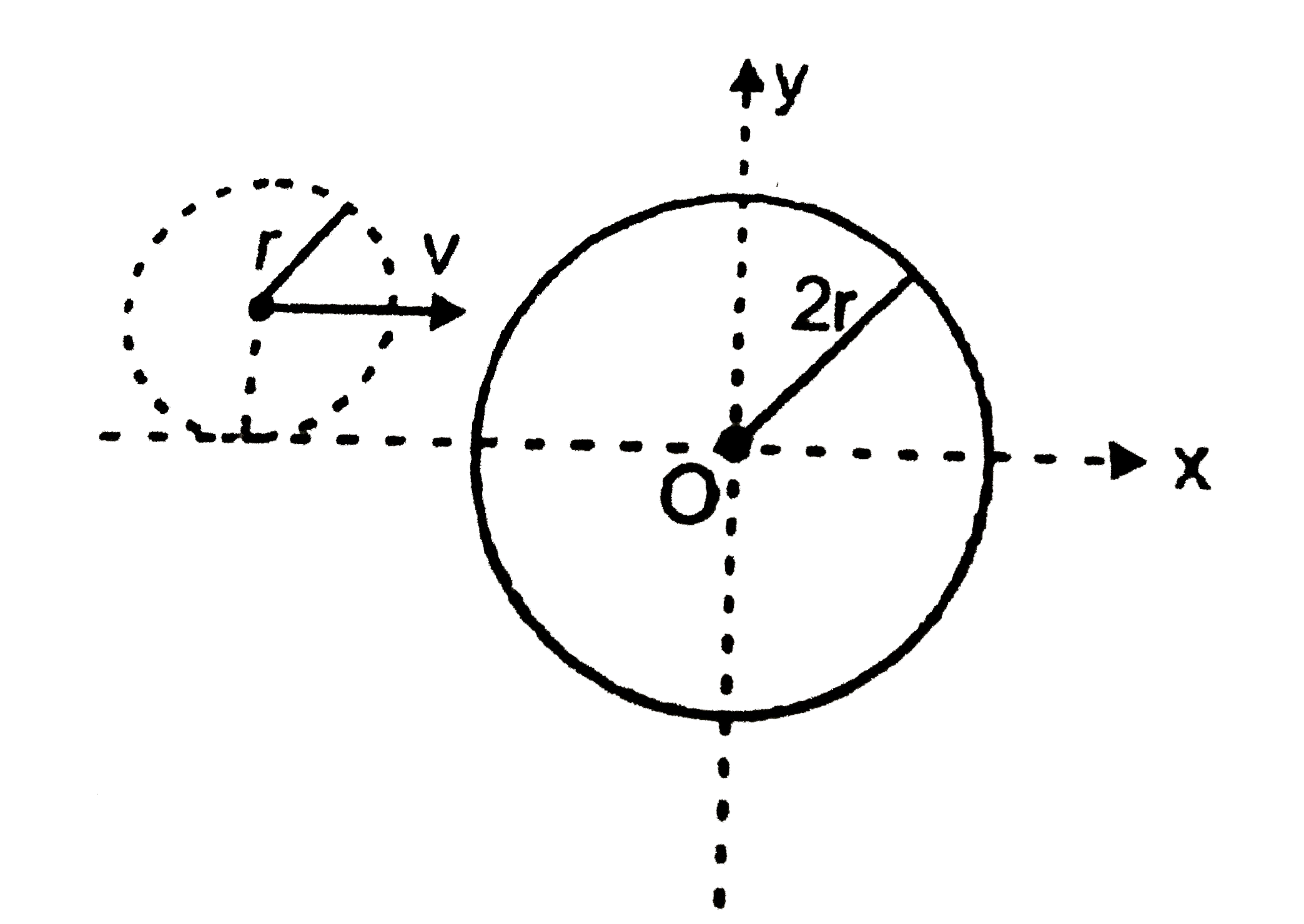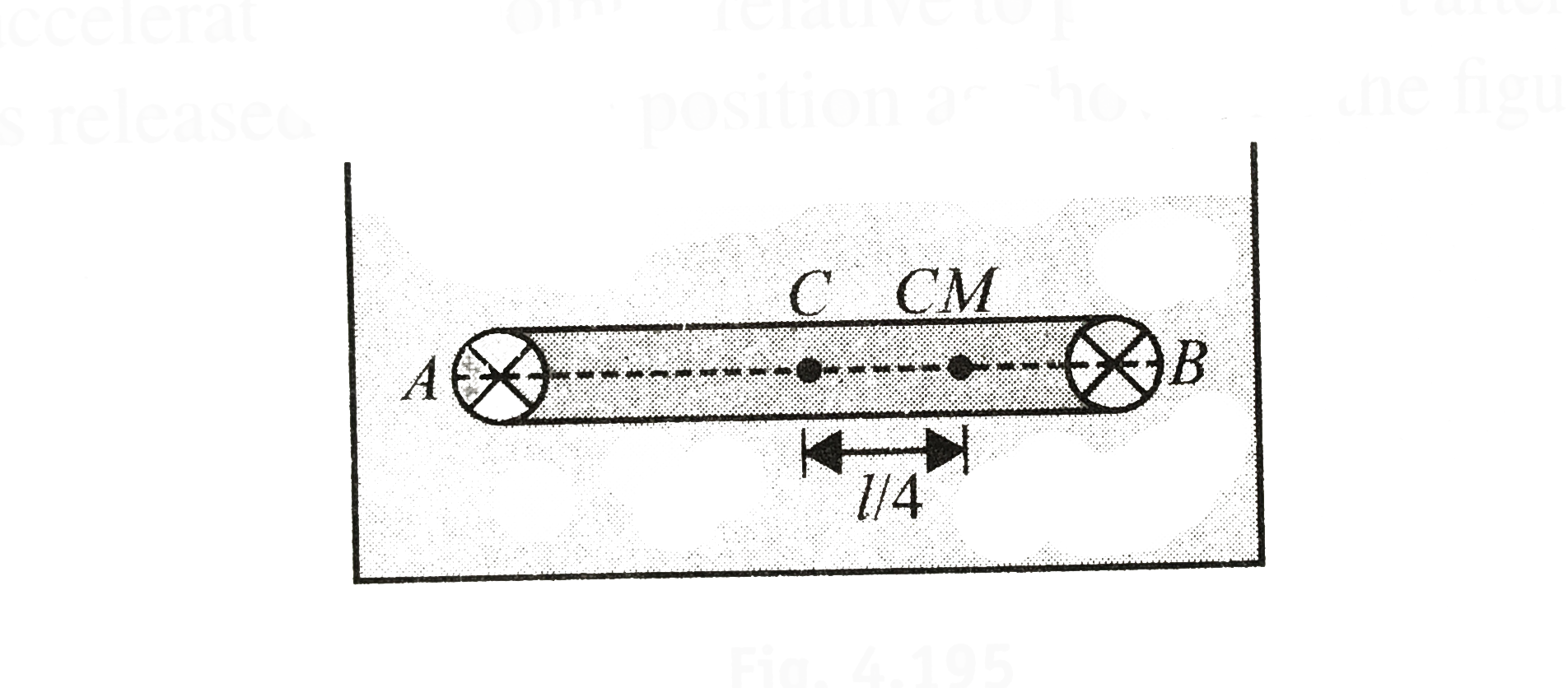A marble of mass x and diameter 2r is gently released in a tall cylinder containing honey. If the marble displaces mass y(<x)of the liquid, then the terminal velocity is proportional to
x+y
x−y
x+yr
x−yr
The correct Answer is:D
To solve the problem, we need to determine the relationship between the terminal velocity of the marble and the given parameters: mass of the marble (x), mass of the liquid displaced (y), and the radius of the marble (r).
1. Understanding the Problem:
- We have a marble of mass x and diameter 2r, which means the radius r=diameter2.
- The marble is released in honey, and it displaces a mass y of the liquid.
- Since y<x, the marble is denser than honey.
2. Volume of the Marble:
- The volume V of the marble can be calculated using the formula for the volume of a sphere:
\(
V = \frac{4}{3} \pi r^3
\)
3. Using the Principle of Buoyancy:
- According to Archimedes' principle, the weight of the liquid displaced by the marble is equal to the weight of the marble when it reaches terminal velocity.
- The weight of the marble is x⋅g (where g is the acceleration due to gravity).
- The weight of the displaced liquid is y⋅g.
4. Setting Up the Equation:
- At terminal velocity, the forces acting on the marble balance out, so we can write:
\(
x \cdot g = y \cdot g + F_d
\)
- Here, Fd is the drag force acting on the marble.
5. Drag Force and Terminal Velocity:
- The drag force can be expressed using Stokes' law:
\(
F_d = 6 \pi \eta r v_t
\)
- Where vt is the terminal velocity and η is the viscosity of the honey.
6. Equating Forces:
- Rearranging the equation gives:
\(
F_d = (x - y) \cdot g
\)
- Substituting for Fd gives:
\(
6 \pi \eta r v_t = (x - y) \cdot g
\)
7. Solving for Terminal Velocity:
- Rearranging for vt yields:
\(
v_t = \frac{(x - y) \cdot g}{6 \pi \eta r}
\)
8. Identifying Proportionality:
- From the equation, we can see that terminal velocity vt is proportional to:
\(
v_t \propto \frac{x - y}{r}
\)
Conclusion:
The terminal velocity of the marble is proportional to the difference in mass between the marble and the displaced liquid divided by the radius of the marble.
- We have a marble of mass x and diameter 2r, which means the radius r=diameter2.
- The marble is released in honey, and it displaces a mass y of the liquid.
- Since y<x, the marble is denser than honey.
- The volume V of the marble can be calculated using the formula for the volume of a sphere:
\(
V = \frac{4}{3} \pi r^3
\)
- According to Archimedes' principle, the weight of the liquid displaced by the marble is equal to the weight of the marble when it reaches terminal velocity.
- The weight of the marble is x⋅g (where g is the acceleration due to gravity).
- The weight of the displaced liquid is y⋅g.
- At terminal velocity, the forces acting on the marble balance out, so we can write:
\(
x \cdot g = y \cdot g + F_d
\)
- Here, Fd is the drag force acting on the marble.
- The drag force can be expressed using Stokes' law:
\(
F_d = 6 \pi \eta r v_t
\)
- Where vt is the terminal velocity and η is the viscosity of the honey.
- Rearranging the equation gives:
\(
F_d = (x - y) \cdot g
\)
- Substituting for Fd gives:
\(
6 \pi \eta r v_t = (x - y) \cdot g
\)
- Rearranging for vt yields:
\(
v_t = \frac{(x - y) \cdot g}{6 \pi \eta r}
\)
- From the equation, we can see that terminal velocity vt is proportional to:
\(
v_t \propto \frac{x - y}{r}
\)
The terminal velocity of the marble is proportional to the difference in mass between the marble and the displaced liquid divided by the radius of the marble.
Topper's Solved these Questions
- PROPERTIES OF SOLIDS AND FLUIDSBOOK - CENGAGE PHYSICS ENGLISHCHAPTER - PROPERTIES OF SOLIDS AND FLUIDSEXERCISE - Multiple Correct
17 Videos
- PROPERTIES OF SOLIDS AND FLUIDSBOOK - CENGAGE PHYSICS ENGLISHCHAPTER - PROPERTIES OF SOLIDS AND FLUIDSEXERCISE - Assertion- Reasoning
13 Videos
- PROPERTIES OF SOLIDS AND FLUIDSBOOK - CENGAGE PHYSICS ENGLISHCHAPTER - PROPERTIES OF SOLIDS AND FLUIDSEXERCISE - Subjective
16 Videos
- NEWTON'S LAWS OF MOTION 2BOOK - CENGAGE PHYSICS ENGLISHCHAPTER - NEWTON'S LAWS OF MOTION 2EXERCISE - Integer type
1 Videos
- RIGID BODY DYNAMICS 1BOOK - CENGAGE PHYSICS ENGLISHCHAPTER - RIGID BODY DYNAMICS 1EXERCISE - Integer
11 Videos
Similar Questions
Two charges, each equal to q, aer kept at x=−a and x=a on the x-axis. A particle of mass m and charge q0=q2 is placed at the origin. If charge q0 is given a small displacement (ylt lt a) along the y-axis, the net force acting on the particle is proportional to
View SolutionA spherical metal ball of mass m and radius (r) is falling through a viscous medium. The value of its terminal velocity is proportional to
View SolutionA liquid drop of mass m andradius r is falling from great height. Its velocity is proportional to
View SolutionTwo spheres of equal masses but radii R and 2 R are allowed to fall in a liquid, the ratio of their terminal velocities is
View SolutionA small steel ball of radius r is allowed to fall under gravity through a column of a viscous liquid of coefficient of viscosity η. After some time the velocity of the ball attains a constant value known as terminal velocity υT. The terminal velocity depends on (i) the mass of the ball m (ii) η, (iii) r and (iv) acceleration due to gravity g . Which of the following relations is dimensionally correct?
View SolutionA fluid of density ρ and viscosity η is kept in a container .The container is accelerating in horizontal direction with acceleration a . A Small solid sphere of radius r and density ρ/2 is held at the base of the container and released The distance travelled by the sphere in attaining half the terminal velocity is s=ρr2vτkη[In(2)−12] . Find the value of k .

View SolutionA tiny sphere of mass m and density x is dropped in a jar of glycerine of density y. When the sphere aquires terminal velocity, the magnitude of the viscous force acting on it is :
View SolutionTwo copper balls of radius r and 2r are released at rest in a long tube filled with liquid of uniform viscosity. After some time when both the spheres acquire critical velocity (terminal velocity) then ratio of viscous force on the balls is :
View SolutionA small smooth disc of mass m and radius moving with an initial velocity 'v' along the positive x− axis collided with a big disc of mass 2m and radius 2r which was initially at rest with its centre at origin as shown in figure.

If the coefficient of restitution is 0 then velocity of larger disc after collision is
View SolutionA non-uniform cylinder of mass m, length l and radius r is having its centre of mass at a distance l.4 from the centre and lying on the axis of the cylinder. The cylinder is kept in a liquid of uniform density ρ. The moment of inertia of the rod about the centre of mass is l. The angular acceleration of point A relative to point B just after the rod is released from the position as shown in the figure is

View Solution
